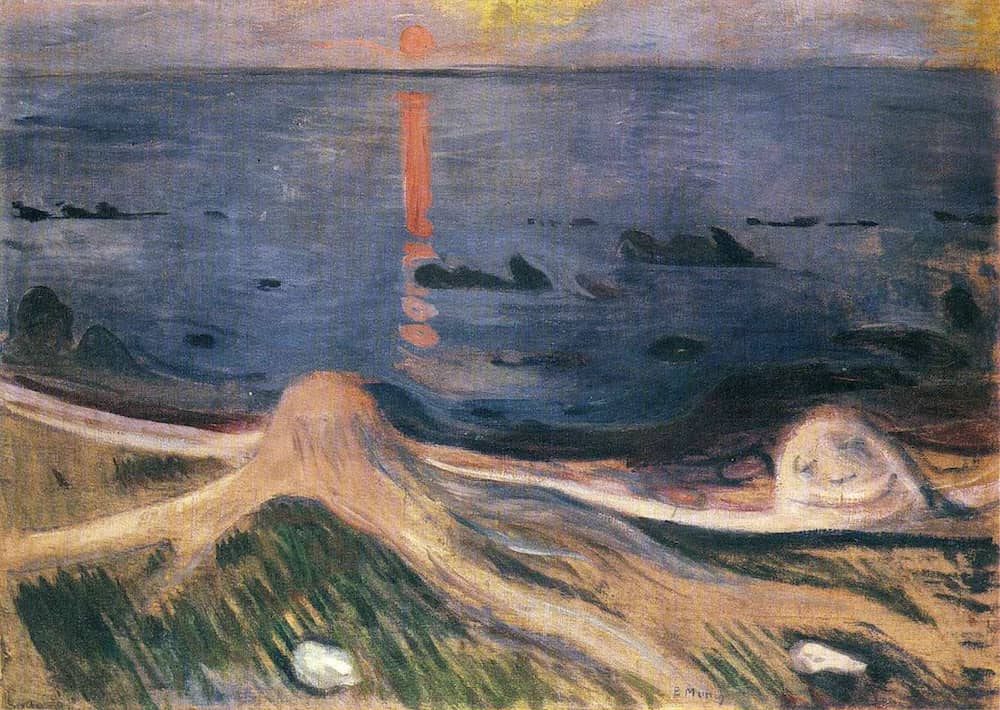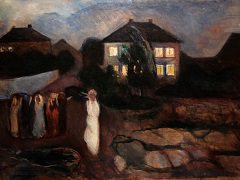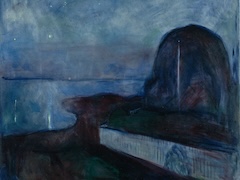The Mystery of a Summer Night, 1892 by Edvard Munch

The symbolist movement has a lasting effect on Edvard Munch, particularly that variety of it sometimes called synthetism, initiated by Paul Gauguin and practiced by the Pont-Aven painters and the group called the Nabis. Symbolism was originally a literary movement, associated with such poets as Munch's friend Mallarme. In art it meant, rather vaguely, the portrayal of scenes of such a type and in such a way that they would imply more general meanings underlying external appearances. Synthetism dealt more specifically with the representation of scenes whose components were governed by memory or imagination instead of immediate observation; in other words, mental instead of ocular images, conceptions instead of perceptions. With the synthetist painters, as with the primitive art they admired and were influenced by, this tended to produce simplified forms and the reduction of the scene to a static flat pattern; our mind's eye tends to forget details, to see things fixed rather than in motion, and in the flat rather than in the round.
A two-dimensional pattern requires relatively unmodulated areas of color enclosed and separated by lines, which may be either negative, that is to say formed naturally by the juxtaposition of different color or light values, or positive, which means actual drawn lines added to emphasize the separation of the color areas. The synthetists used both types but favored the positive, which contributes to greater unity, emphasizes the conceptual image, and is in any case much easier to produce a strong color pattern with negative lines. Their choice of colors was determined not by naturalistic fidelity but by the emotional charge added to the subject by memory and association. In The Mystery of a Summer Night Munch utilized this new subjectivity, unity and freedom of color, although his color schemes were relatively subdued to suit the somber themes of death and suffering that had already gripped him and were now reinforced by the pessimism of the bohemian circle in Berlin.




















